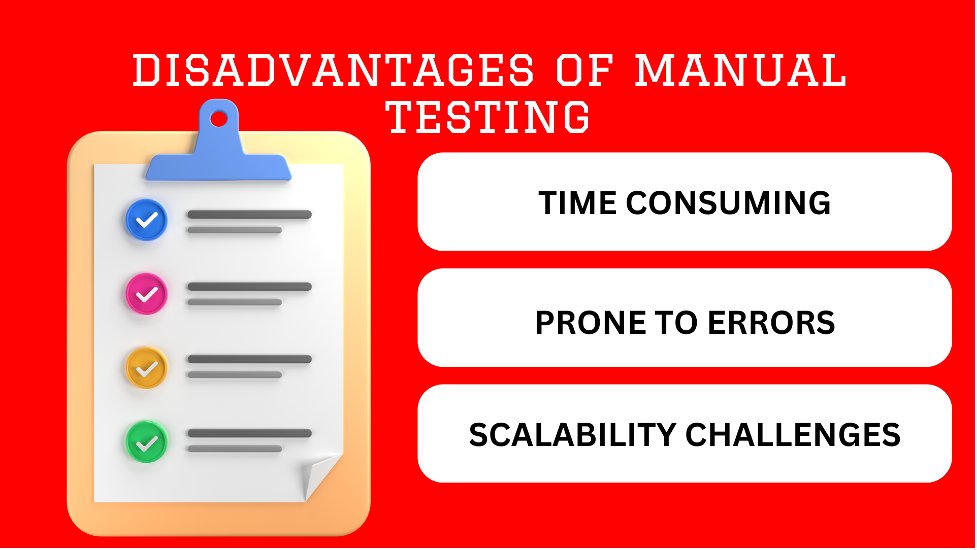In the rapidly evolving world of software development, maintaining high-quality standards is crucial.
This need for speed and accuracy is often overlooked, leading to costly errors in manual tests. Automation testing emerges as a solution, offering faster, more accurate, and cost-effective methods to enhance software quality.
This article highlights the many advantages of automated testing, including its ability to significantly reduce manual errors. Various automation tools and services play a key role in achieving these results.
Consistency and Accuracy
One of the major advantages of automated testing is consistency. Unlike manual testing, which is error-prone and affected by human mistakes, with automated tests, the same operations are run exactly the same way each time. This ensures the result is consistent and correct; no critical issues should be bypassed.
Automation tools are designed to handle repetitive tasks with precision, ensuring that each test case is executed exactly the same way every time.
This eliminates the variability that can occur in manual testing due to fatigue, oversight, or simple human error. Automated software testing services ensure higher accuracy in the testing process, resulting in better-quality software.
Speed and Efficiency
Automated testing significantly improves the speed of test runs, which allows tests to be run at much higher speed than is possible with manual testing.
This is particularly useful for large projects, where thousands of test cases must be executed within a short time frame. The automated tools can run such tests on multiple environments simultaneously, which reduces the time taken for testing by a great extent.
This efficiency from automated testing not only fast-tracks the development life cycle but also saves time for developers and testers to really focus on key areas that may need human intervention.
Fast and efficient testing processes ensure that an organization can achieve shorter release cycles and quicker time-to-market. This is done by leveraging automation testing services.
Improved Test Coverage
Manual test coverage is often limited due to time and resource constraints. On the other hand, automated testing covers a lot of test coverage as compared to manual testing, mainly because it is possible to run a larger quantity of tests in comparably less time.
The wide range of automatically tested cases helps increase coverage, ensuring that the software is tested in most areas, including edge cases that manual testing might miss.
With automation, teams can create large test suites and run scenarios that would be difficult or impossible to test manually. Automated testing solutions provide the means of running extensive test cases to ensure that the software is rigorously tested with the least effort before its release.
This minimizes the chance of errors reaching the market, resulting in higher-quality software.
Cost Effectiveness
While the development of automated testing tools and services involves a huge initial investment, it also leads to significant cost savings in the long term.
These resultant automated testing tools reduce the range of manual testing processes that could be quite resource and time-consuming. Ultimately, this leads to reduced labor costs and more efficient use of resources.
Free automation tools enhance cost-effectiveness by offering powerful testing capabilities without additional costs. Combined with the efficiency of automated testing, these tools help organizations achieve high-quality testing without additional costs.
Thus, automated testing turns out to be cost-effective for reducing manual errors and improving the overall quality of the software.
Early Detection of Defects
This is where automated testing provides significant leverage in early defect detection right inside the development process.
Integrating automated tests into the continuous integration/continuous deployment pipeline allows teams to identify problems as soon as they are introduced into the codebase. Very early detection prevents the accumulation of defects, eventually making them harder to fix and more expensive.
Automation tools allow developers to detect errors in real-time, enabling immediate correction before they escalate. Most test automation services include comprehensive reporting features that provide detailed information about test results, helping teams pinpoint the exact cause of defects.
Early detection not only minimizes manual mistakes but also adds to the overall stability and reliability of the software.
Reusability of Test Scripts
Automated testing allows for the creation of reusable test scripts that can be run multiple times across different environments and scenarios. However, such characteristics mark majority improvements vis-à-vis manual testing, which requires by and large every test case to be designed again or modified at least for various conditions that need to be tested.

Software testing tools also offer benefits such as the development of modular and reusable test scripts, enabling teams to manage their testing efforts more effectively while reducing the time spent developing new tests.
Software updates can easily be applied to these scripts, ensuring that automated tests remain relevant and effective throughout the development cycle. This makes the whole automated testing process even more efficient and reduces the likelihood of errors caused by testing manually.
Continuous Testing and Integration
In today’s technological landscape, continuous testing and integration are critical for developing high-quality software. Automated testing is the backbone of code under development because of how it is so reliable and efficient in continuous testing.
Integration with automation tools is seamless with the CI/CD pipeline, allowing test cases to be run automatically with every commit. This is an uninterrupted process that leaves no mistakes unturned and allows time-bound corrections of all errors, thereby stopping their dissemination further into the system’s development process.
Automated testing solutions provide the necessary infrastructure for continuous testing, maintaining high quality with minimal risk of manual errors.
Conclusion
Automated testing is a powerful tool for eliminating human errors in software development. Companies can, therefore, easily conduct testing with greater accuracy, speed, and efficiency using automation tools, automation testing services, and software testing tools.
The benefits of automated testing, from reliable regression testing to early defect detection, make it a must-have in modern software development.
As the demand for higher-quality software increases, the need for automated testing will remain critical. Investing in automated testing solutions and refining processes will reduce manual errors, improve software quality, and help maintain a competitive edge in software development.
FAQ
1. How will automated testing bring about a reduction in manual errors?
Automated testing helps avoid manual errors and omissions by running test cases precisely and consistently without human intervention. There will be no variability and no chance for errors that may occur while running test cases manually, hence ensuring reliable and repeatable test results.
2. Common Automation Tools to Prevent Manual Errors:
Popular automation tools include Selenium, Jenkins, and JUnit. These tools simplify the testing process by automating repetitive tasks and generating detailed reports, thereby reducing the likelihood of manual errors.
3. Can free automation tools be as effective as paid ones in reducing manual errors?
While free automation tools can be very effective at eliminating manual errors, this is usually true for small and medium-sized projects. Your choice between free and paid tools should be guided by your project’s needs in terms of features, scalability, and support.
Lynn Martelli is an editor at Readability. She received her MFA in Creative Writing from Antioch University and has worked as an editor for over 10 years. Lynn has edited a wide variety of books, including fiction, non-fiction, memoirs, and more. In her free time, Lynn enjoys reading, writing, and spending time with her family and friends.















